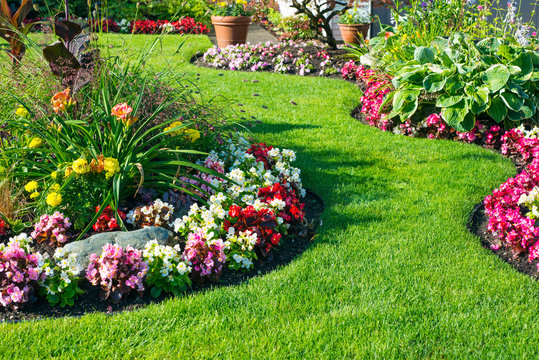
Sustainable Gardening: How You Can Transform Your Outdoor Space
Gardening is not just about beautifying your home; it’s a step towards creating a healthier planet. By adopting sustainable practices, you’re contributing to a greener environment right from your backyard. Whether you have a vast garden or a small balcony, there’s always a way to make your green space more eco-friendly.
Start with Composting
Composting is the cornerstone of any sustainable garden. It’s a simple process that enriches the soil, reduces waste, and cuts down on your carbon footprint. Start by setting aside a spot in your garden for a compost bin. You can add kitchen scraps, lawn clippings, and even paper.
Over time, these materials break down into rich, nutritious compost that will make your garden thrive. Not only does this practice recycle waste, but it also reduces the need for chemical fertilisers, which can harm the environment.
Choosing the Right Plants
Selecting the right plants is crucial for sustainable gardening. Native species are always a good choice as they require less water, are more resistant to pests, and provide essential habitats for local wildlife. Consider the biodiversity of your garden and aim to plant a variety of species that flower at different times, offering a year-round haven for bees, butterflies, and birds.
By choosing plants that are well-suited to your local climate and soil type, you’ll use fewer resources and enjoy a healthier, more vibrant garden.
Water Wisely
Efficient water use is another key aspect of sustainable gardening. Collect rainwater in barrels to irrigate your garden, reducing reliance on mains water. Drip irrigation systems and soaker hoses target water directly to the roots where it’s needed most, minimising waste.
Watering in the early morning or late evening reduces evaporation, and mulching your beds will help retain soil moisture. These practices ensure your garden is watered efficiently, saving precious resources and reducing your water bill.
Encouraging Wildlife
A sustainable garden is a haven for wildlife. Installing bird feeders, bat boxes, and insect hotels can attract various species and help maintain the ecological balance in your garden. Planting native shrubs and flowers provides food and shelter for birds, insects, and other wildlife, creating a living ecosystem right in your backyard.
Avoid using pesticides and chemical fertilisers, which can harm the very creatures you’re trying to attract. Instead, opt for natural pest control methods, such as encouraging predators like ladybirds and lacewings.
Recycle and Reuse
Embracing recycling and reusing materials is at the heart of sustainable gardening. Old containers, pallets, and even broken ceramics can be repurposed into planters, bird baths, or decorative elements for your garden. This reduces waste and adds a unique, personal touch to your outdoor space.
By being creative with materials that would otherwise be discarded, you’re taking an active role in reducing landfill waste and promoting a circular economy.
Natural Greenhouses
Traditional wooden greenhouses are a beautiful addition to any sustainable garden. They extend the growing season, allowing you to cultivate a wider variety of plants, including those that wouldn’t normally thrive in your climate. By controlling temperature and humidity, these greenhouses make efficient use of resources and can even be heated using renewable energy sources. They also provide a sheltered environment for propagating seeds and growing delicate plants, further enhancing the biodiversity of your garden.
Eco-friendly Garden Design
Designing your garden with sustainability in mind can make a big difference. Consider the positioning of plants and structures to maximise sunlight exposure and natural shelter, reducing the need for artificial heating and protection. Incorporate permeable paving to allow rainwater to replenish the groundwater, reducing runoff and the risk of flooding.
A thoughtfully designed sustainable garden not only looks beautiful but also works in harmony with the environment, requiring less maintenance and fewer resources over time.
Support Local Ecosystems
Supporting your local ecosystem is a vital component of sustainable gardening. Use organic methods to improve soil fertility and control pests, preserving the health of your local environment. Engage with community gardening projects or seed swaps to share resources and knowledge.
By creating a garden that supports local wildlife and plants, you contribute to the preservation of your region’s biodiversity, ensuring that future generations can enjoy a rich, natural environment.
Sustainable Pest Control
Opting for sustainable pest control methods is crucial in maintaining the ecological balance of your garden. Chemical pesticides not only harm the pests they’re aimed at but also beneficial insects, birds, and the soil’s microbiome. Instead, explore natural predators or barriers as pest control solutions. For example, encouraging birds into your garden can help manage slug and snail populations, while companion planting can naturally deter pests. Marigolds, for instance, are known to repel nematodes and other garden pests.
Summary
Transforming your outdoor space into a sustainable garden is an enjoyable and rewarding endeavour. It’s about making small, thoughtful changes that collectively have a significant impact on the environment. By composting, choosing the right plants, using water wisely, and encouraging wildlife, you’re not only creating a beautiful garden but also contributing to a greener, healthier planet.
Let your garden be a testament to the positive changes we can all make, one plant at a time. Remember, every step towards sustainability is a step towards a better future for ourselves and the world around us.